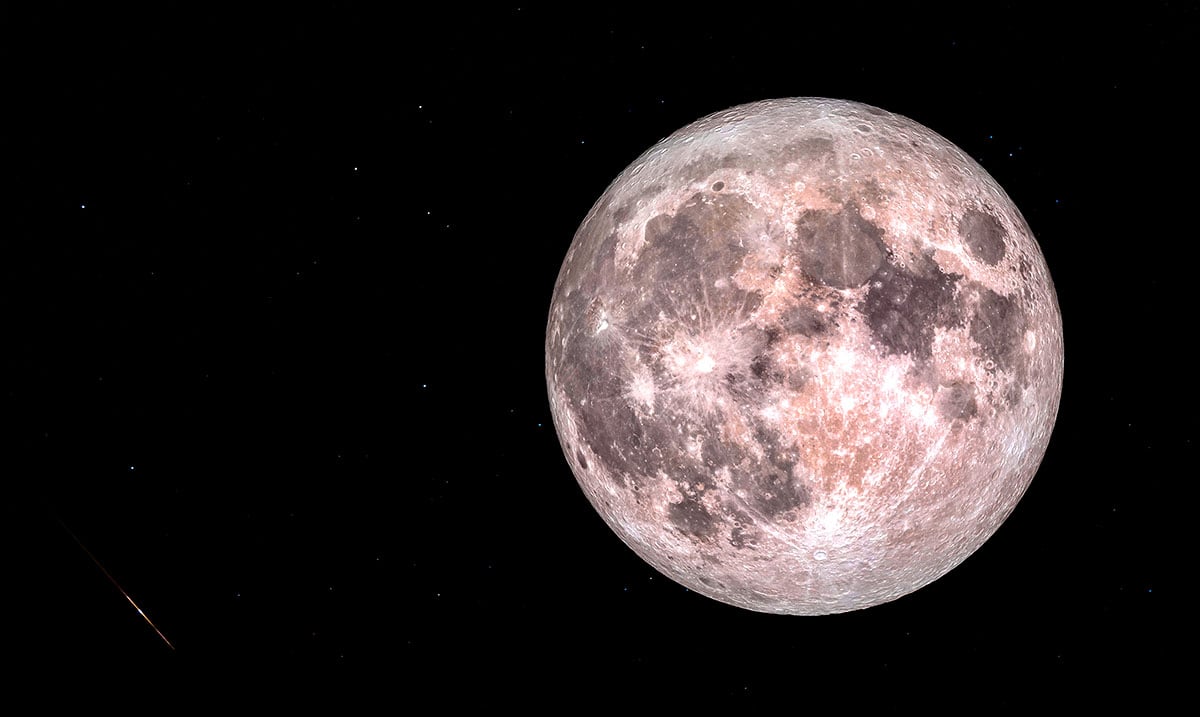April is going to be one hell of a month when it comes to the things going on in the celestial world. We have a supermoon to look forward to and so much more. If you’re someone who likes to stargaze, this is the time to do it.
April is going to be a powerful month energetically but also offer some amazing views, that much we know to be true. At the beginning of the month, we will kick things off with the new moon on the 12th, this new moon might not sound like much but when the moon is gone, the stars are much clearer. If you’re wanting to get your telescope out and whatnot, that might be a good time to do it.
From there we have the Lyrids meteor shower on the 21-23rd. While the shower will be active all month, for the most part, the peak will be on the dates noted above and during that, we may see lots of shooting stars. This shower is one that a lot of people look forward to each year, myself included. It is an annual shower and well, we could face around 15 meteors per hour which doesn’t sound like a lot but really does light up the sky.
Earth Sky wrote as follows on the lyrid meteor shower:
The annual Lyrid meteor shower is active each year from about April 16 to 25. In 2021, we expect the shower to pick up steam beginning late at night Monday, April 19, 2020, probably peaking in the predawn hours on Thursday, April 22. The follow morning (April 23) might be good too, if you’re game. This shower comes after a months-long meteor drought that always falls between early January and April’s Lyrid shower each year. There are no major meteor showers during those months, as you can see by looking at EarthSky’s meteor shower guide. By April, many meteor-watchers are itching to get going! So – though they produce only 10 to 15 meteors per hour at their peak – the Lyrids are always welcome!
No matter where you are on Earth, the best time to watch is between midnight and dawn. Or this year, in 2021, the best viewing might come between moonset and dawn. Find out the moon’s setting time in your sky via TimeandDate. Moon or no moon, you’ll want to watch in a dark country sky. Keep reading to find some tips for watching the 2021 Lyrids.
Once all of this has occurred moving onto the 27th we have what is known as a supermoon. This is something that happens from time to time and while it doesn’t mean the moon is enormous or anything like that during it the full moon might appear a good bit larger. This will according to SeaSky be the first supermoon of three to come this year.
SeaSky wrote as follows on this supermoon:
Full Moon, Supermoon. The Moon will be located on the opposite side of the Earth as the Sun and its face will be will be fully illuminated. This phase occurs at 03:33 UTC. This full moon was known by early Native American tribes as the Pink Moon because it marked the appearance of the moss pink, or wild ground phlox, which is one of the first spring flowers. This moon has also been known as the Sprouting Grass Moon, the Growing Moon, and the Egg Moon. Many coastal tribes called it the Fish Moon because this was the time that the shad swam upstream to spawn. This is also the first of three supermoons for 2021. The Moon will be near its closest approach to the Earth and may look slightly larger and brighter than usual.
I know, these things might not sound like much but they are all worth taking time to view. I love spending time out at night looking at the sky and relaxing. Will you be viewing any of these celestial events?

